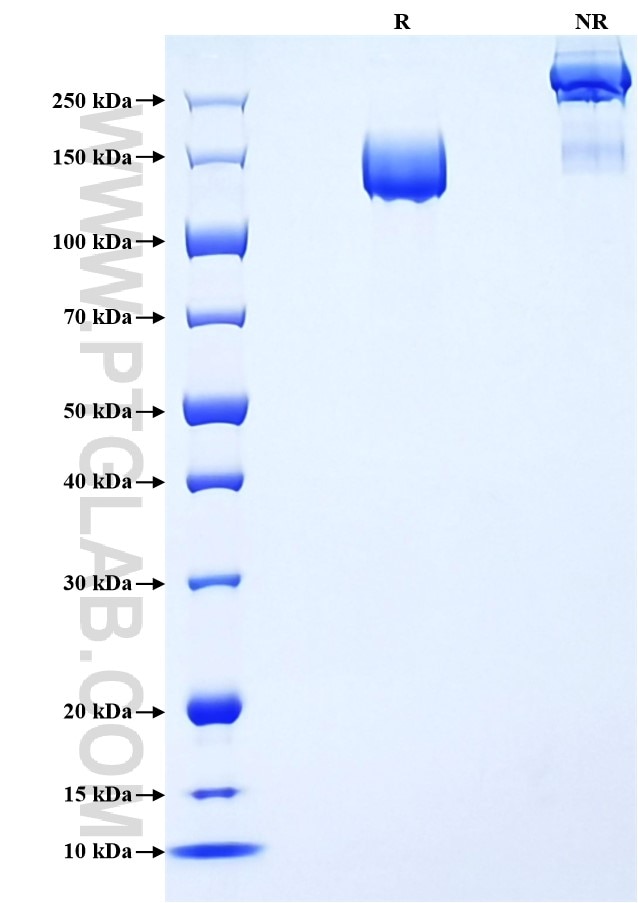Recombinant Human ENPEP protein (rFc Tag)
Species
Human
Purity
>90 %, SDS-PAGE
Tag
rFc Tag
Activity
not tested
Cat no : Eg2736
Validation Data Gallery
Product Information
| Purity | >90 %, SDS-PAGE |
| Endotoxin | <0.1 EU/μg protein, LAL method |
| Activity |
Not tested |
| Expression | HEK293-derived Human ENPEP protein Arg41-Gly957 (Accession# Q07075) with a rabbit IgG Fc tag at the C-terminus. |
| GeneID | 2028 |
| Accession | Q07075 |
| PredictedSize | 131.1 kDa |
| SDS-PAGE | 130-150 kDa, reducing (R) conditions |
| Formulation | Lyophilized from 0.22 μm filtered solution in PBS, pH 7.4. Normally 5% trehalose and 5% mannitol are added as protectants before lyophilization. |
| Reconstitution | Briefly centrifuge the tube before opening. Reconstitute at 0.1-0.5 mg/mL in sterile water. |
| Storage Conditions |
It is recommended that the protein be aliquoted for optimal storage. Avoid repeated freeze-thaw cycles.
|
| Shipping | The product is shipped at ambient temperature. Upon receipt, store it immediately at the recommended temperature. |
Background
ENPEP, or glutamyl aminopeptidase, is a type II integral membrane protein with an extracellular zinc-binding domain. ENPEP plays a significant role in the renin-angiotensin system (RAS) by participating in the catabolic pathway, forming angiotensin III from angiotensin II through the hydrolysis of the N-terminal aspartate (or glutamate), thereby regulating blood pressure and blood vessel formation. ENPEP is widely expressed in a subset of vascular smooth muscle cells, likely pericytes, in systemic vasculature, the heart, and the brain. It is expressed at high levels in the epithelial cells of the kidney glomerulus and proximal tubule cells, where it contributes to the regulation of blood pressure and may contribute to the risk of atrial fibrillation, angiogenesis, hypertension, and tumorigenesis.
References:
1. Roger S Holmes. et al. (2017). J Data Mining Genomics Proteomics. 8(2):2. 2. Antti Arppo. et al.(2024). PLoS One.19(12):e0307731. 3. Aoyun Wang. et al. (2022). Cancer Med. 11(3):880-887.
